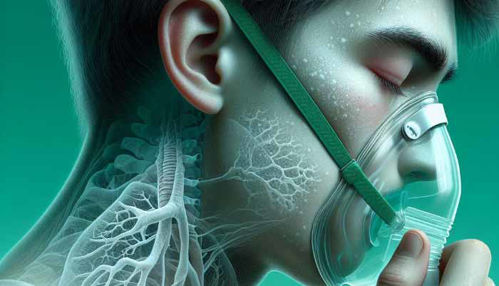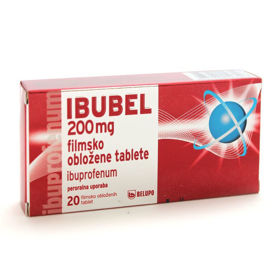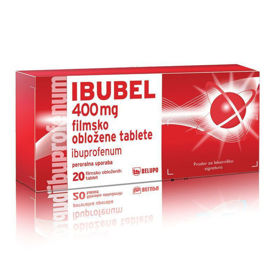Peritonitis is an inflammation usually caused by an infection of the peritoneum.
PERITONITIS: General | Symptoms | Diagnosis | Treatment | Questions and Answers | Sources/references
The peritoneum is a thin, transparent membrane that generally covers all the abdominal organs and the inside of the wall. It is usually caused by an infection that spreads from an infected organ in the abdomen; common sources are perforation of the stomach, intestine, gallbladder, or appendix. The peritoneum is extremely resistant to infection, and peritonitis develops only if the contamination continues; otherwise, the peritoneum heals without treatment.
In sexually active women, a common cause of peritonitis is pelvic inflammation. Infection of the uterus or fallopian tubes, which can be caused by many types of bacteria, including those that cause gonorrhea and chlamydial infections, spreads to the abdominal cavity. In the case of liver or heart failure, fluid (ascites) can accumulate in the abdomen and become infected.
Peritonitis can develop after surgery for many reasons. Injury to the gallbladder, ureter, bladder, or bowel during surgery can cause bacteria to spill into the abdomen. Spillage can also occur during surgery, during which sections of the intestine are combined.
Video content: Peritonitis and causes, symptoms and treatment

Peritoneal dialysis (treatment of kidney failure) often leads to peritonitis. Usually, the cause is an infection of the drains inserted into the abdomen.
Peritonitis can also result from irritation without infection. Inflammation of the pancreas (acute pancreatitis) can, for example, cause peritonitis. Even talc or starch on surgeon's gloves can cause peritonitis without infection.
Symptoms
The symptoms of peritonitis depend partly on the type and extent of the infection. Usually, a person vomits, has a high fever, and a sensitive stomach. One or more boils (abscesses) may form, and the infection may leave scars in connective bands (adhesions), which may eventually cause intestinal obstruction.
Video content: appendicitis and peritonitis

If peritonitis is not treated immediately, complications develop quickly. Peristalsis disappears, and fluid is retained in the small and large intestines, which also exits the bloodstream into the abdominal cavity. Severe dehydration develops, and electrolytes are lost from the bloodstream. More serious complications follow, e.g., failure of the lungs, kidneys, or liver and formation of clots in the body.
Diagnosis
Quick diagnosis is essential. The patient is X-rayed lying down and standing up. The images show free gas in the abdomen, indicating perforation. Sometimes, fluid is removed from the abdominal cavity with a needle so that the laboratory staff can identify the organism that caused the infection and determine its sensitivity to various antibiotics. Of course, exploratory surgery is the most reliable method of diagnosis.
Treatment
The first method of treatment is usually urgent exploratory surgery, especially when there is a possibility of appendicitis, perforated peptic ulcer, or diverticulitis. In cases of inflammation of the pancreas (acute pancreatitis) or pelvic inflammatory disease in women, emergency surgery is usually out of the question.
Antibiotics are given immediately, usually several at a time. Tubes are also introduced to drain liquid and gas through the nose into the stomach or intestine. The patient is then replaced with fluids and electrolytes intravenously.
Questions and answers
What is the most common cause of peritonitis?
Peritonitis is an abdominal lining inflammation most often caused by a bacterial infection. It can be life-threatening if not treated immediately. Treatment options include hospitalization, antibiotics, and surgery[1].
What is one of the first signs of peritonitis?
Symptoms of peritonitis include abdominal pain and tenderness, bloating and abdominal fullness, and fever[2].
Does peritonitis ever go away?
The condition you suffer from depends on the cause and type of peritonitis and how quickly it is treated. Early recognition is essential to control peritonitis before it becomes complicated. Treatment is usually adequate, but some complications, such as organ damage, can be permanent[3].
What is the survival rate with peritonitis?
The mortality rate for uncomplicated secondary peritonitis (SP) and superficial abscesses is less than 5%, but this rate can increase to more than 30–50% in severe infections. The mortality rate associated with intra-abdominal abscess formation is less than 10-20%[4].
Sources and references
Extensive health manual for home use, Youth Book Publishing House
- Peritonitis - https://www.betterhealth.vic.gov.au
- Peritonitis - https://www.mayoclinic.org
- Peritonitis - https://my.clevelandclinic.org
- Peritonitis and Abdominal Sepsis - https://emedicine.medscape.com













